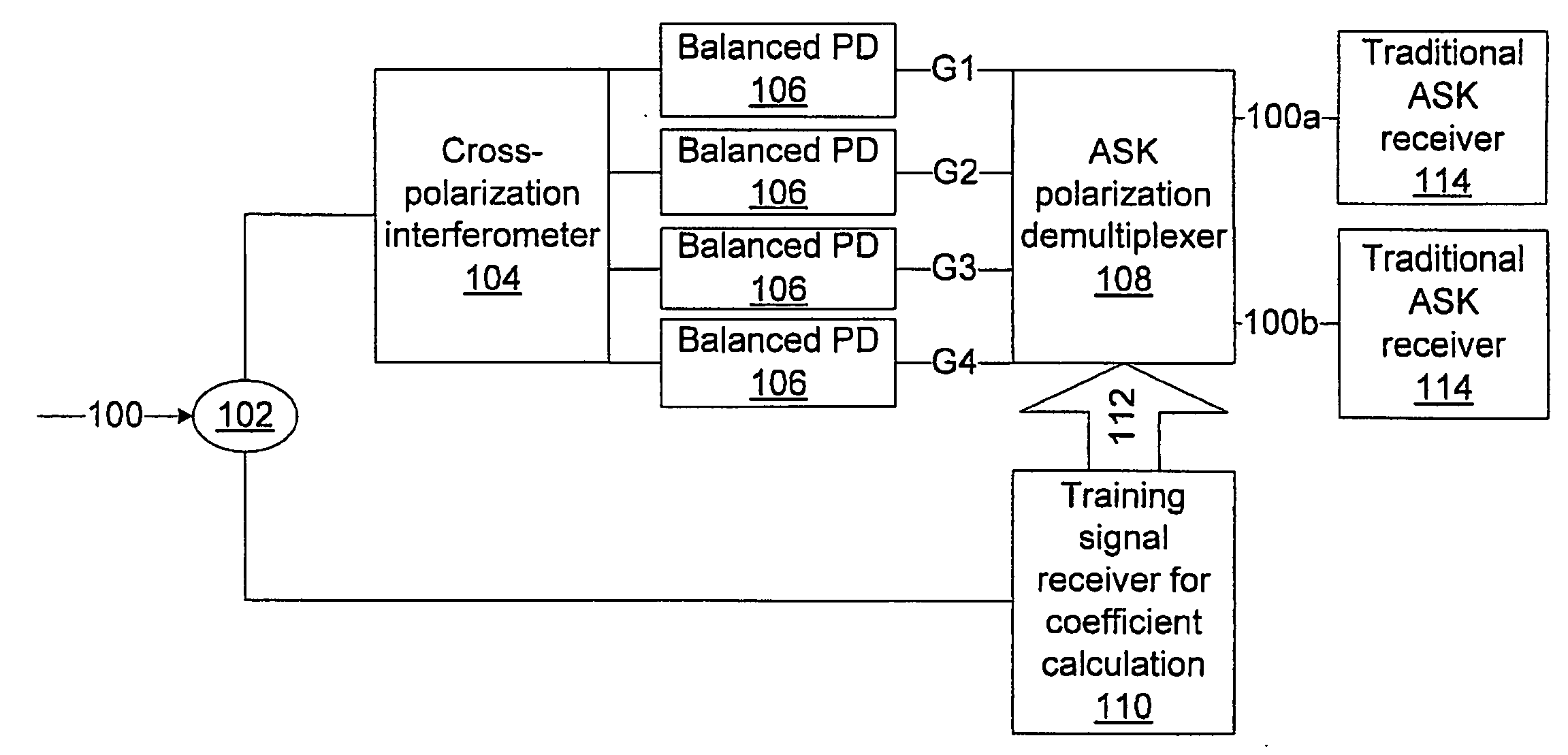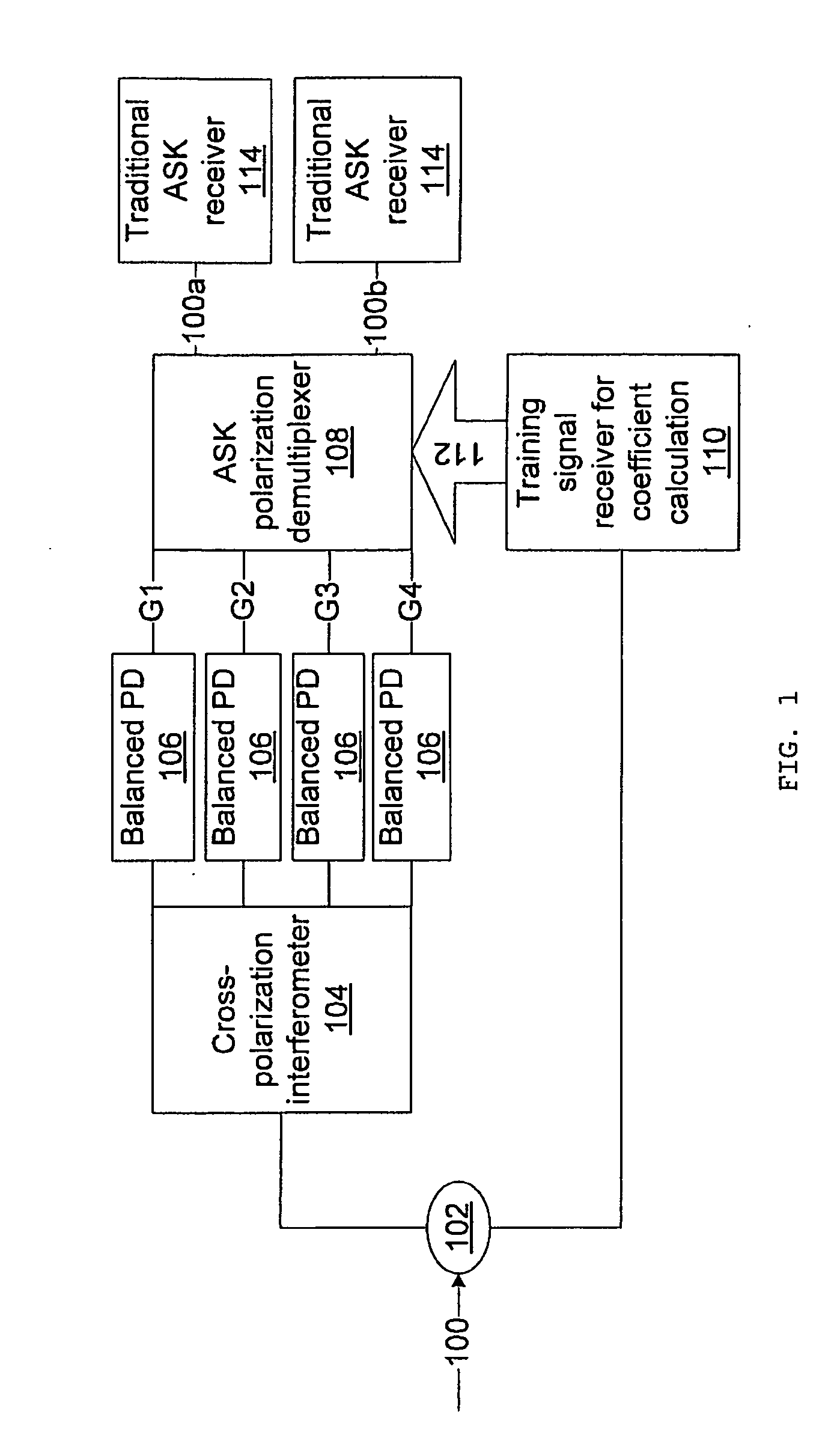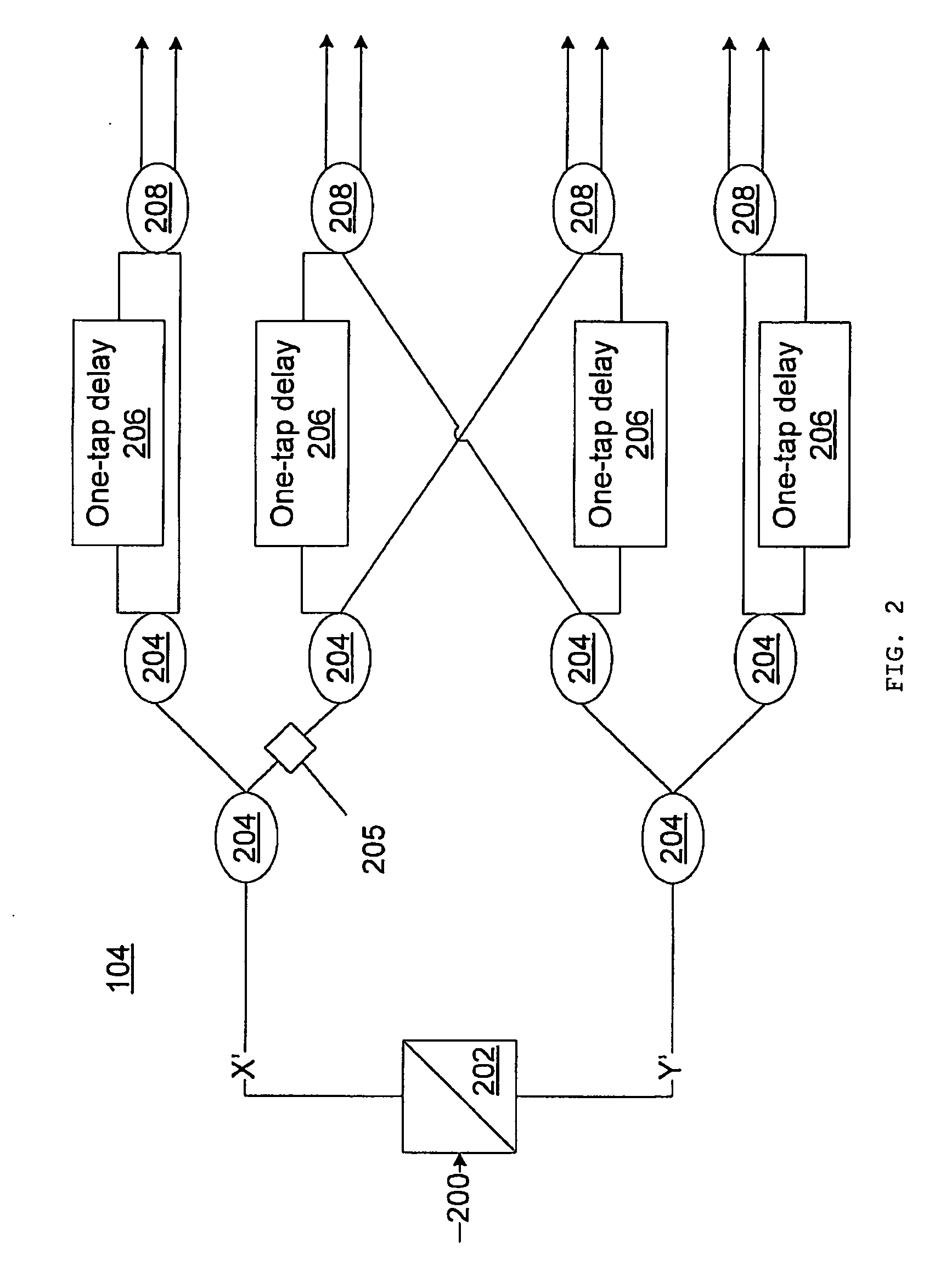Direct detection receiver using cross-polarization interferometer for polmux-ask system
a cross-polarization interferometer and direct detection technology, applied in the field of optical communication systems, can solve the problems of generating cross-polarization beating noise between the two signals, unable to guarantee the alignment between the pbs and pbc, and not being able to detect the same wavelength in the same direction
- Summary
- Abstract
- Description
- Claims
- Application Information
AI Technical Summary
Problems solved by technology
Method used
Image
Examples
Embodiment Construction
[0020]The present principles provide differential delay detection for polarization multiplexing (PolMux) systems, and in particular for PolMux-amplitude shift keying (ASK) systems. The differential delay detection can simplify a receiver design, improve system reliability and reduce cost by simplifying signal processing for a frequency offset and a phase offset and removing an expensive narrow line-width local oscillator laser.
[0021]Through simulation, it has been proven that the cross-delay differential detection in accordance with the present principles can recover polarization rotation very well. As such, PolMux-ASK systems can benefit from using cross-delay differential detection instead of coherent detection, resulting in lower cost and complexity. In accordance with an illustrative embodiment, a 4-path butterfly cross-polarization differential delay (Mach-Zehnder) interferometer is employed to process the differential detection when signals are transmitted at two orthogonal po...
PUM
 Login to View More
Login to View More Abstract
Description
Claims
Application Information
 Login to View More
Login to View More - R&D
- Intellectual Property
- Life Sciences
- Materials
- Tech Scout
- Unparalleled Data Quality
- Higher Quality Content
- 60% Fewer Hallucinations
Browse by: Latest US Patents, China's latest patents, Technical Efficacy Thesaurus, Application Domain, Technology Topic, Popular Technical Reports.
© 2025 PatSnap. All rights reserved.Legal|Privacy policy|Modern Slavery Act Transparency Statement|Sitemap|About US| Contact US: help@patsnap.com



